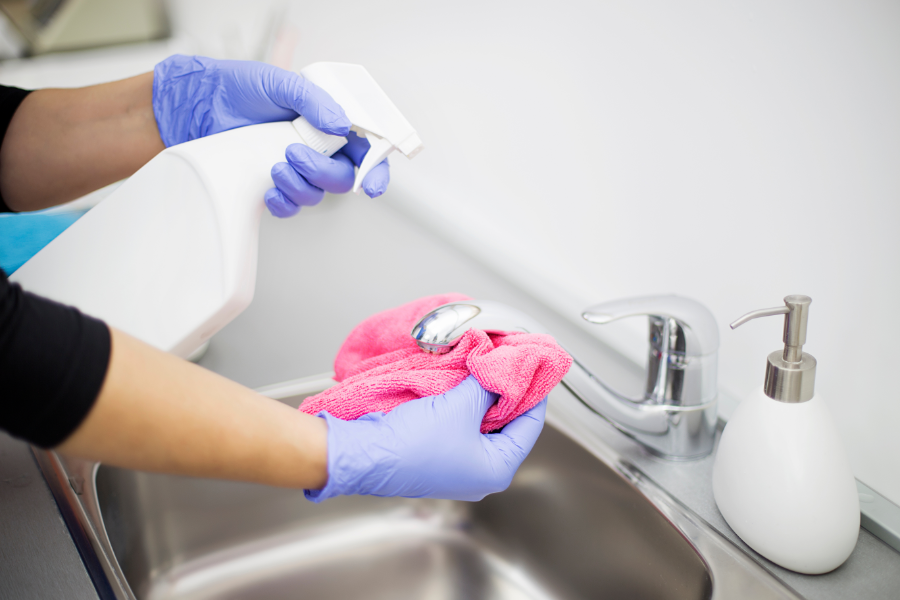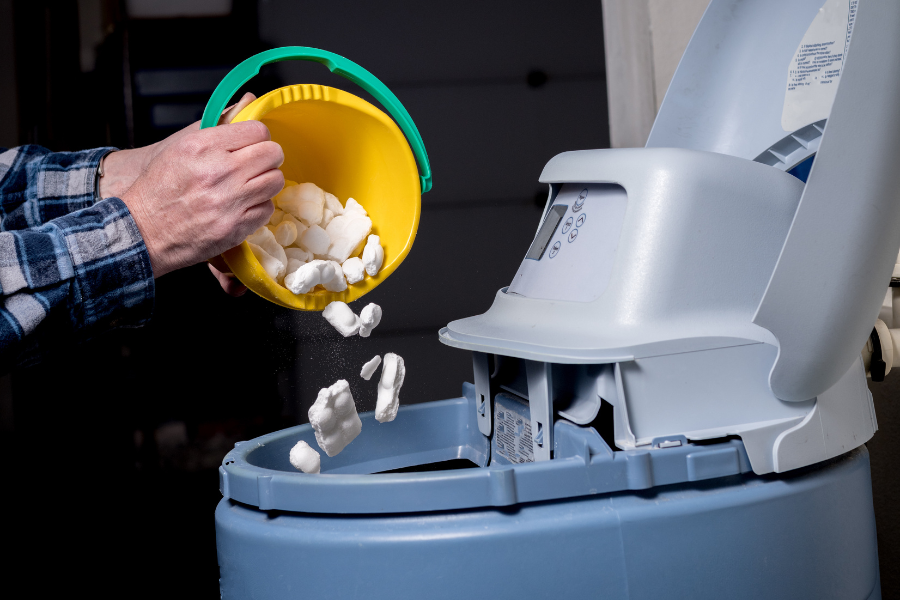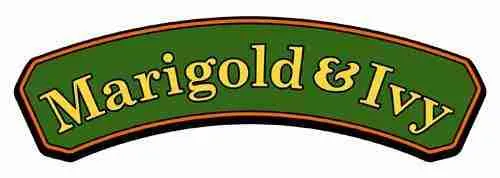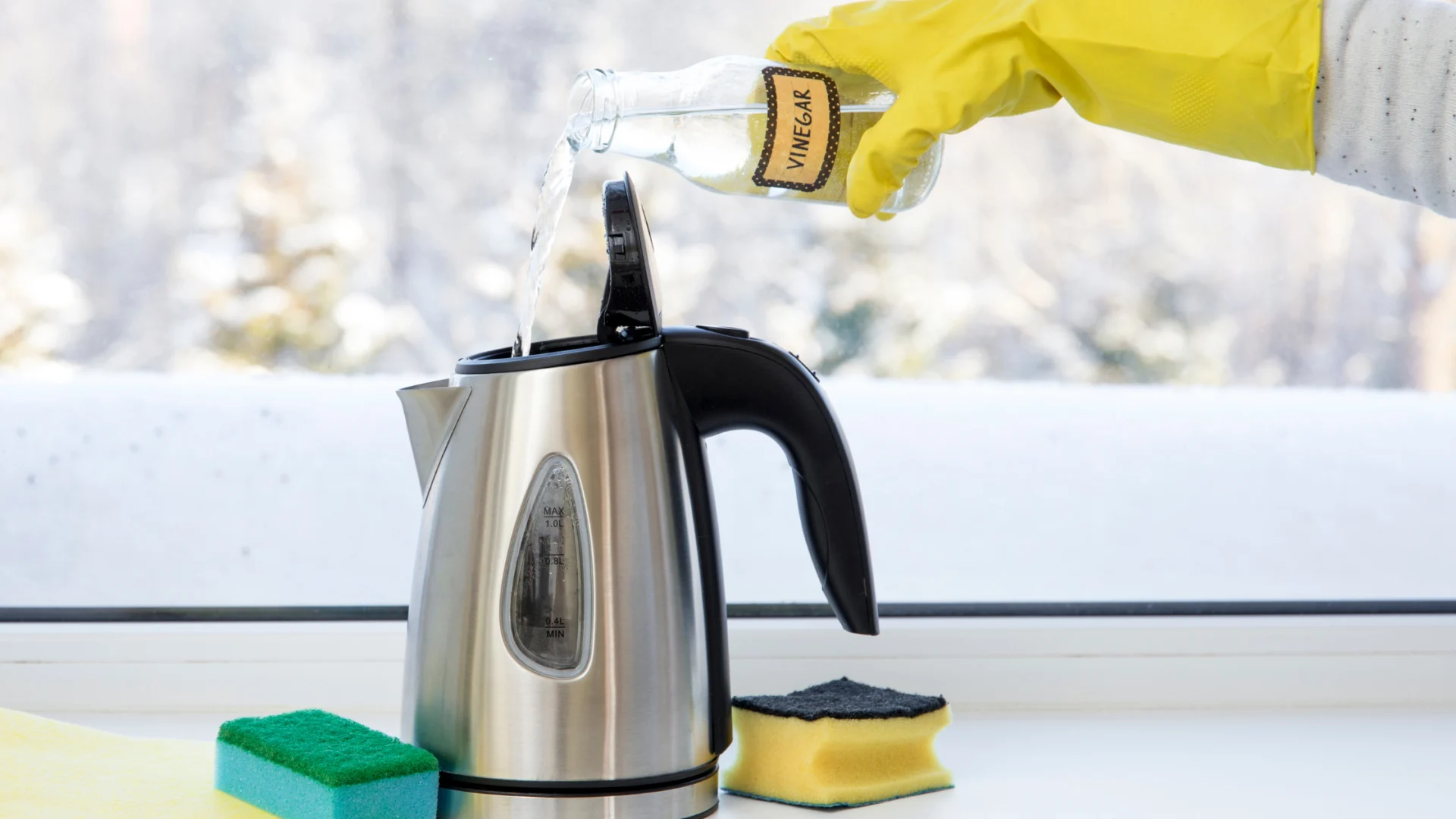Limescale is a common household problem. When limescale builds up, the appliances, faucets, and surfaces in your kitchen and bathroom may become damaged. Hence, you must remove the limescale properly. But how can you do so? Does vinegar clean limescale?
Even though you regularly clean your faucets and showerheads, limescale formation can still happen.
Luckily, white vinegar and some elbow grease will resolve your limescale problem – a sure win for your wallet and the environment. Vinegar contains acidic properties, which break down the calcium carbonate that forms limescale.
Are you looking for some solutions to remove limescale? Look no further! We have expert tips for you.
What Is Limescale and How Does It Form?
Limescale is a calcium compound that has the appearance of a white, chalky, and hard substance. Most people are familiar with it but are not aware of how it is formed.
Limescale forms from the residue of alkaline and hard water or rainwater that percolates through sedimentary rocks. When the water has evaporated, a white, lumpy, scaly deposit of calcium carbonate or limescale is left.
Limescale can build up quickly, especially if you don’t clean it away immediately. If you fail to remove it, it will eventually become thicker and harder to remove. When this happens, your home appliances, taps, machinery, and pipes won’t work correctly.
Is Limescale Harmful?
Limescale is not harmful but beneficial for your health. How? The mineral properties found in limescale are beneficial for your body.
So, there’s nothing to worry about when you see limescale in your cup of coffee – it is favorable for you.
Limescale, however, does not look appealing. As mentioned earlier, it may also affect the performance of your pipes, showerheads, and taps, resulting in reduced water pressure and blockages over time.
So, limescale may be vital for your health but is not good for your appliances and plumbing.
Does Vinegar Clean Limescale Effectively?
Yes, vinegar is an effective cleanser. Its acidity is what makes it an effective cleaner. It can counteract icky buildups in drains, remove limescale, hard water stains, and dissolve soap scum. It also cleans calcium deposits from taps.
Vinegar helps dissolve limescale. It is an excellent alternative to stronger and harsher chemicals. Be aware, though, that using vinegar to clean limescale may require patience, elbow grease, and depending on how long the limescale has been there and how much of it multiple tries.
How to Use Vinegar to Clean Faucets and Remove Limescale

The most natural way to remove limescale from the tap is using vinegar. As mentioned earlier, vinegar has high acidic properties making it effective in removing tough limescale stains.
Here’s how you can get rid of limescale from your tap with vinegar.
Things you’ll need:
- Vinegar
- Baking soda (optional)
- Bowl
- Paper towel
Instructions:
- Step 1: Add vinegar to a bowl and soak a piece of paper towel in it.
- Step 2: Wrap the paper towel around the tap using a rubber band
- Step 3: Leave the paper towel for about 1 to 2 hours.
- Step 4: Remove the paper towel, then rinse the faucet and scrub it with baking soda.
- Step 5: Wipe off the baking soda and the remaining limescale with a moist paper towel.
Does Vinegar Clean Limescale on Household Appliances?
Household appliances like coffee machines and kettles are no exceptions to limescale buildup, especially if you don’t clean these items regularly.
Don’t worry because you can remove these white, scaly deposits with the vinegar-cleaning solution below.
How to Get Rid of Limescale from Household Appliances Using Vinegar
Things you’ll need:
- Vinegar
- Diluted vinegar
- Dishwashing liquid
- Water
- Paper towel
- Scouring pad/steel wool
Instructions:
Step 1: Pour some vinegar into the appliance and leave it for 1 to 2 hours.
Step 2: If the appliance is made from glass, wipe and rinse it with soapy water. However, metal surfaces may require scrubbing with a steel wool or scouring pad.
Step 3: To remove the limescale on the inner portion of the appliance, add diluted vinegar solution, then run the appliance as usual. Repeat this process when needed.
Step 4: Substitute the diluted vinegar with water to rinse the vinegar. Run the appliance once again to ensure that there’s no trace of vinegar.
Read our article – Will Apple Cider Vinegar Clean Your Coffee Pot? to learn how to clean your coffee pot with apple cider vinegar.
Does Vinegar Clean Limescale in the Bathroom?
Limescale is formed in places where hard water is left to dry. This includes bathroom tiles, windows, shower screens, basins, and bathtubs.
You can easily remove limescale from these areas by simply wiping them in circular motions.
However, when there are already stubborn layers of limescale, you will need the help of vinegar. Follow these steps to keep your entire bathroom clean of limescale.
How to Use Vinegar to Clean Limescale in the Bathroom
Things you’ll need:
- Vinegar
- Cleaner or Miracle II Soap (affiliate link)
- Paper towel
- Spray bottle
- Water (to rinse)
Instructions:
Step 1: Add vinegar to the paper towel and wipe the affected area in the bathroom.
Step 2: If step one does not work, add vinegar to a spray bottle. Spray the surfaces with vinegar solution every 15 minutes and up to two hours for tough limescale areas.
Step 3: Scrub and rinse the affected area with a cleaner or Miracle II Soap to make the surfaces look brand new.
What Other Household Items Remove Limescale?
Using vinegar to clean limescale is an efficient way to remove it. However, you’re not limited to this household staple alone, as there are a lot of items you can find at home to remove limescale buildup.
Baking Soda
Baking soda also works in descaling surfaces. Unlike calcium carbonate, baking soda is sodium bicarbonate which can easily be dissolved in water. Using this item will reverse the scaling process of limescale. However, baking soda is difficult to use on flat surfaces.
Lemon Juice
Lemon juice is a popular alternative to vinegar. Like acetic acid in vinegar, the citric acid in lemon helps dissolve limescale. You can also use the abovementioned methods and instead of vinegar use lemon juice.
Coca Cola
This may be an odd tip, but Coca-Cola is an effective limescale remover.
You can also use it to clean limescale from the toilet bowl. Put 1 liter of Coca-Cola in the toilet bowl and leave it for about an hour to do its magic. Afterward, scrub the toilet bowl before flushing the toilet.
Pro Tip to Prevent Limescale Buildup

If you don’t want to go through the hassle of cleaning limescale regularly, learn how to prevent it. There are numerous ways to prevent limescale in your home, including installing a water softener system. But if you don’t have a water softener, try these prevention tips below.
Shower Heads and Taps
Put carbon filters in your shower heads and taps to reduce the proliferation of limescale. The filters are efficient in removing hard water and will ensure a smooth water flow. We recommend you clean your shower heads and taps at least once a month for optimal performance.
Washing Machine
Use a water softener product in your washing machine, as this helps prevent limescale buildup. It will also help clean the washing machine and make it work properly.
Kitchen Appliances
Small kitchen appliances such as coffee machines, Keurigs, and kettles are prone to limescale because water is heated and evaporated.
To prevent limescale build-up, regular descaling is a must. This will also ensure that the appliances work efficiently, avoiding costly repairs.
Read our post – Can I Use Apple Cider Vinegar to Clean My Keurig to learn how to use apple cider vinegar to clean your Keurig
Clean Regularly
Last but not least is to clean your house regularly. Keeping the home clean is the best way to avoid the proliferation of limescale buildup in the bathroom, taps, showerheads, kitchen, and whatnot.
Conclusion
As you have read, vinegar can effectively clean limescale. Although limescale isn’t harmful for your body it can be harmful to your faucets and appliances.
To remove the limescale on your faucets, appliances, and bathroom, follow our guide above. To prevent limescale buildup follow our tips for limescale prevention.
If you ran out of vinegar or don’t have any, you can replace it with baking soda, lemon juice, or Coca-Cola.
To learn what other water stains you can use vinegar to remove, read our article – Does Vinegar Remove Hard Water Stains?

